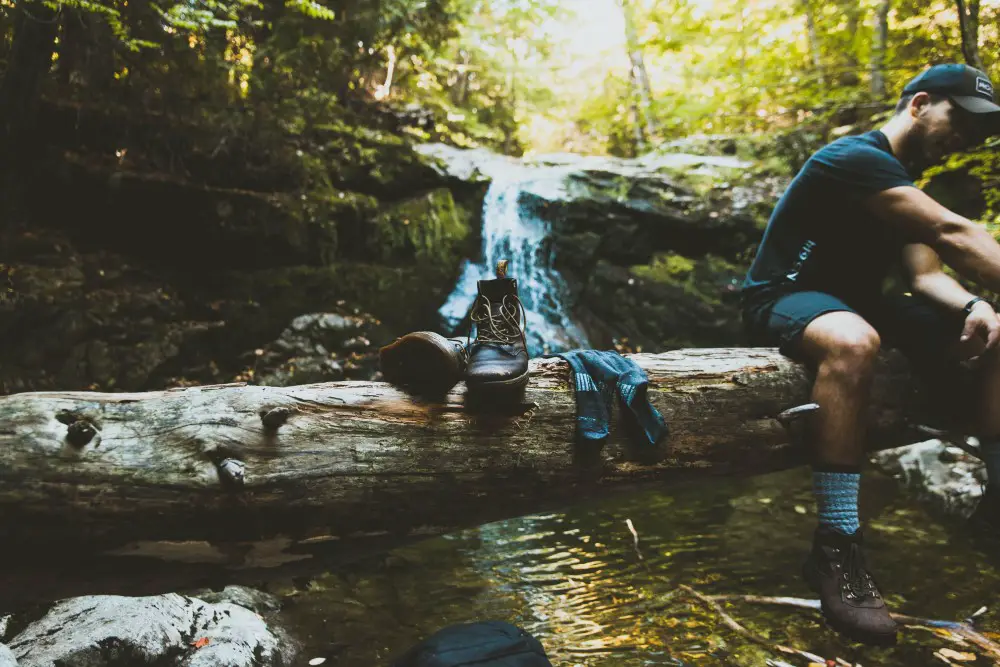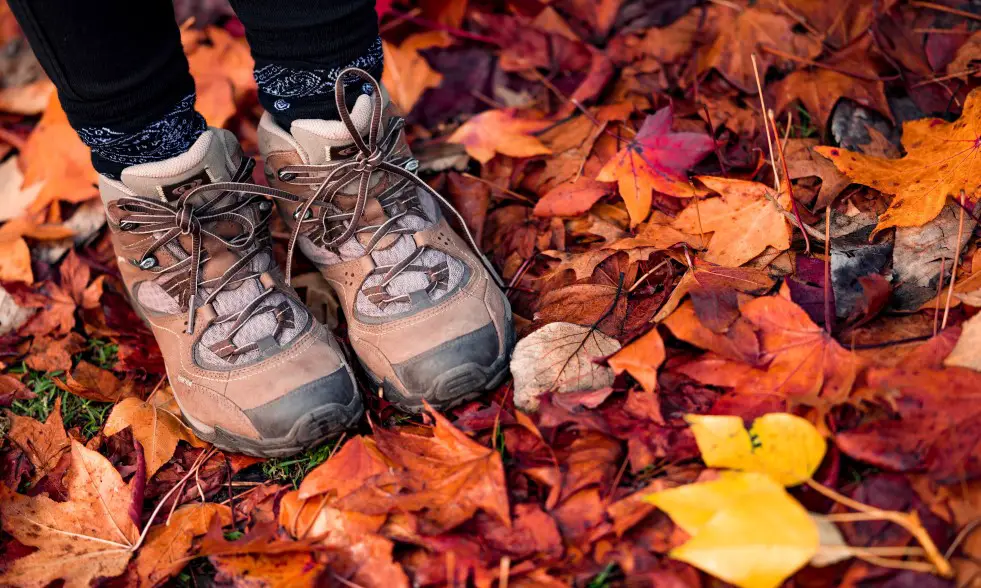How Tight Should Hiking Boots Be?


Figuring out if the hiking boots you are trying on are going to be too tight can be hard to do. Finding good help can be even harder when store salespeople and chatbots are trying to get you to buy as their top priority.
This guide will help you by laying out proper tightness and hiking boot fit point-by-point so you can be confident of your choice.
Hiking Boot Fit Point by Point
- Toes
- Your toes are where you want the most space within each boot. Make sure you have a centimeter or more between the end of your toes and the boot. When you are hiking down long slopes your foot will tend to shift slightly forward over time. If your toes eventually jam into the end of your boot you’ll be in serious pain and may even lose toenails following your hike. Even if your toes just barely reach but start to rub on the end of your toenails, life is going to be bad.
- Make sure you can wiggle your toes up and down and a little to the sides. Your toes naturally perform balance actions within your boot given space so make sure they can do their job.
- Under Your Arch
- You want either a slight gap on the bottom of your arch or light contact when the boots are new.
- After breaking hiking boots in there is usually a depression that forms for your heel and ball of your foot causing the arch to get more support than it might seem when first trying them on.
- If you have flat feet, post in the comments and I can write a specific piece for that circumstance if there is enough interest.
- Middle of Your Foot
- Around the middle of your foot, you should feel gentle snugness on each side. You don’t want the boot to squeeze in enough to compress your foot and you also don’t want your foot wiggling too freely.
- If there is too much freedom side-to-side you will lose some of your ankle stability.
- Tightness around the sides of your foot can be managed partially by the shape of the boot, partly by how you tie the strings, and how tightly you pull the laces.
- Heel
- The back of your heel should have firm but not uncomfortable contact with the back of the boots.
- After tying your boots up with appropriate tightness your heel should not move very much at all. The slipperiness of your socks is how to manage friction that will exist when walking. If you try to manage friction by having space on your heel you won’t have your boots tight enough.
- Ankle
- The sides of your boots should be in contact with your ankle and lower leg for whatever height the boot has. It should be snug but not super-tight. The idea here is that if your boots go up over your ankle, you want the boot to absorb a lot of the pressure if your foot twists sideways unnaturally instead of the ligaments and tendons in your ankle. If the boot is too loose you won’t get that support and will have greater exposure to ankle sprains or breaks.
- Ankle support is especially critical if you are going to be hiking with a heavier pack. The extra weight on your joints if twisted can turn what would have been a minor sprain into a serious one or even a break.
- Top of Foot
- The very top of your foot is a little tricky because when your boots break in your heel, ball of the foot, and toes will have created minor depressions in the sole and will give your foot a bit more vertical space. Slightly tighter on the top than you might otherwise like is OK as a result but use your judgment about what is too much.
- If you have a boney spot the sticks up a little on top of your foot you’ll want to make sure that the hiking boot tongue is a soft material and not a rigid one that will irritate that hard point.
Additional Considerations and Notes

Unlike your normal shoes, it is more important for hiking boots to fit well because:
- You will undoubtedly be walking much further in them in one go.
- It is likely that you will be hot and get sweaty feet when hiking compared to other normal activities.
- On an extended hike you will be carrying extra weight with you either in the form of a camel back, day pack, or hiking rig.
- When you discover they don’t fit right, you may be trapped in those boots for miles vs. shoes you just need to navigate to your car in.
The fit is different than normal shoes
- With normal shoes when you try them on in the store you mainly just hope they feel comfortable. Hiking boots should also be comfortable but need more attention than just that.
- You need hiking boots to fit more carefully and snuggly to provide support and avoid blisters.
- Hiking boots will “break-in” to some extent depending on the kind so the fit in the store should be expected to be a little tighter than it will be once you’ve walked in them on a few hikes.
- With extended hikes, feet can swell which changes the fit of the boot. Foot swelling isn’t normally much of a consideration for regular shoes but in hiking boots, it can be a real factor.
Breaking boots in might be required.Not all boots require breaking in. Depending on the brand and model you are getting you should be aware of the best way to prepare them for serious use.
To learn more about How to Break In Hiking Boots please read the article I wrote about that here: How to Break in Hiking Boots Fast

